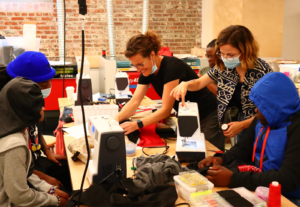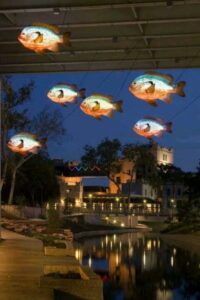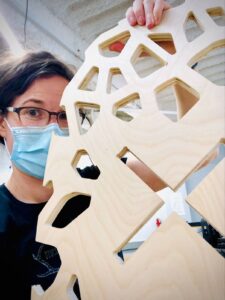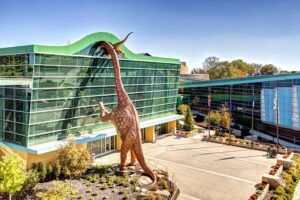Lifting Voices Through an Engineering Mindset

by Janet Hollingsworth, Vice President of STEAM & Innovation —
I have taken on most things in life with a pretty simple mantra: approach challenges with a creative mindset, and seek out interesting hard problems. As a young person, there was a lot I wanted to do: build things; bike and explore new places; understand machines; make furniture; learn how to weld; write like an architect; hike to the top of everything; collect strange curiosities. I liked working on problems that didn’t have answers in the back of a book. When the high school theater department needed a set that included an alpine chateau, a train, and the Taj Mahal–I was on it. I developed low fidelity modular systems for quick scene transformations using milk crates and interlocking parts. I did not have a particular passion at that time for math or science, and with the remarkable exception of my mom–a chemical engineer–I did not see many other females working in STEAM fields. My strongest subject areas in high school were not math or science and yet I ended up pursuing engineering. That might seem like an odd statement because prior to this my understanding of Engineering was: the thing you do if you’re good at math and science (or at least loved them). But I wasn’t and I didn’t. Yet.
 What I did love: being creative, making meaningful gifts for others, and thinking about how different people engaged with the world. I found myself asking questions like: How can we make the things in our lives better and more inclusive? How can we co-create solutions to hard problems with diverse voices and perspectives (rather than retrofitting solutions)? How can we develop dynamic ecosystems that allow us to embrace circular economies and minimize waste and environmental impact? This, I learned, is the engineering spirit. It’s a gift that frames how I move through life. (I also not-so-secretly believe all great engineers are creatives!)
What I did love: being creative, making meaningful gifts for others, and thinking about how different people engaged with the world. I found myself asking questions like: How can we make the things in our lives better and more inclusive? How can we co-create solutions to hard problems with diverse voices and perspectives (rather than retrofitting solutions)? How can we develop dynamic ecosystems that allow us to embrace circular economies and minimize waste and environmental impact? This, I learned, is the engineering spirit. It’s a gift that frames how I move through life. (I also not-so-secretly believe all great engineers are creatives!)

I worked professionally as a structural engineer out of college and was lucky enough to lead some very creative projects in collaboration with artists (see images: Dinosaurs at the Children’s Museum of Indianapolis and School of Fish at San Antonio Riverwalk). But I’ve worn a lot of hats beyond that: I established a woodworking and design LLC in 2013 (see sculpture and furniture examples); I became a librarian; worked as a maker educator; worked with blind artists to use creative technologies to make makerspaces more accessible; developed workforce development programs with people transitioning out of homelessness; created platforms for community activism including engagements in Germany and Denmark; and now build frameworks for STEAM learning in diverse environments. At the heart of all of it, I work on understanding and finding solutions to hard problems.

One of those problems: too few women in STEAM. Being a female working in STEAM fields for over 15 years has not been without its own challenges–there were many instances of being diminished, my role mistaken, or occasions where my ideas were dismissed. The personal antidote that has served me well: humor, humility, resilience, positivity, and compassion when confronting biases. The systemic remedy: stay passionate and dedicated to lifting underrepresented voices into STEAM spaces. I have found that all the projects I’ve ever worked on have benefitted from an engineering mindset: creativity, problem-solving, inclusive collaboration, resourcefulness, understanding order of operations, abundance mindset, sustainability, empathy. Making sure we’re solving for the right variables and selecting the right tools for the job.
What are the right tools for solving under-representation? The education and encouragement of girls and women, and boys and men of color–through mentorship, engagement in meaningful projects, and providing consistent opportunities. We will all benefit when more women and underrepresented voices are expressing the engineering mindset and pushing the boundaries of STEAM fields. We need these valuable perspectives.
I bring an engineering lens to my work at The Possible Zone and my life. I’ll end with a call to action for us all: How can we bring curiosity and creativity into our work to solve our societal problems? How can we challenge ourselves to make meaningful things that consider the world and people around us? What can we do to make systems and designs more inclusive? How can we exchange ideas with one another through compassion, not competition? Together we can lift voices through an engineering mindset.
*women includes all female-identifying individuals, including cis and trans women.